Mining (Minerals & Mining)
From The Encyclopedia of Earth
Minerals & Mining
-
 Featured Article
Featured Article 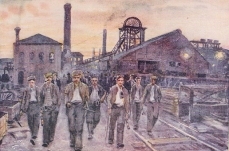 The Coal Question: Of Supposed Substitutes for...Historical E-Book: The Coal Question: An Inquiry Concerning the Progress of the Nation, and the Probable Exhaustion of Our Coal-Mines Author: William Stanley... More »
The Coal Question: Of Supposed Substitutes for...Historical E-Book: The Coal Question: An Inquiry Concerning the Progress of the Nation, and the Probable Exhaustion of Our Coal-Mines Author: William Stanley... More »
-
 Featured Article
Featured Article 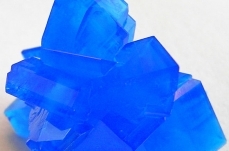 Heavy metal (Minerals & Mining)A heavy metal is any one of a number of elements that exhibit metallic properties, which includes transition metals lanthanides actinides as well as the metalloids Arsenic and... More »
Heavy metal (Minerals & Mining)A heavy metal is any one of a number of elements that exhibit metallic properties, which includes transition metals lanthanides actinides as well as the metalloids Arsenic and... More »
-
 Featured Article
Featured Article  Calcium (Minerals & Mining)Calcium is the chemical element with atomic number 20; it has an atomic mass of 40.078 atomic mass units (amu). The chemical symbol for calcium is Ca. Calcium is a soft gray... More »
Calcium (Minerals & Mining)Calcium is the chemical element with atomic number 20; it has an atomic mass of 40.078 atomic mass units (amu). The chemical symbol for calcium is Ca. Calcium is a soft gray... More »
-
 Featured Article
Featured Article  Zinc (Minerals & Mining)Previous Element: Copper Next Element: Gallium ... More »
Zinc (Minerals & Mining)Previous Element: Copper Next Element: Gallium ... More »
-
 Featured Article
Featured Article  Limestone (Minerals & Mining)Limestone is a sedimentary rock whose chief mineral component is calcite (calcium carbonate: CaCO3). Limestone can be formed by precipitation of calcite... More »
Limestone (Minerals & Mining)Limestone is a sedimentary rock whose chief mineral component is calcite (calcium carbonate: CaCO3). Limestone can be formed by precipitation of calcite... More »
-
 Featured Article
Featured Article  Sulfur (Minerals & Mining)Sulfur (alternatively spelled sulphur) is the chemical element with atomic number 16. The chemical symbol S is used in formulae and abbreviations. Sulfur has high abundance... More »
Sulfur (Minerals & Mining)Sulfur (alternatively spelled sulphur) is the chemical element with atomic number 16. The chemical symbol S is used in formulae and abbreviations. Sulfur has high abundance... More »
-
 Featured Article
Featured Article 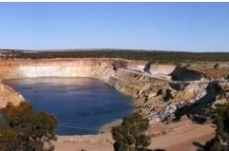 Gold mining and sustainability: A critical...The mining of gold is commonly perceived as ‘unsustainable’ – after all, gold is a metal with finite resources. A more comprehensive analysis of... More »
Gold mining and sustainability: A critical...The mining of gold is commonly perceived as ‘unsustainable’ – after all, gold is a metal with finite resources. A more comprehensive analysis of... More »
-
 Featured Article
Featured Article 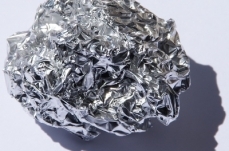 Aluminum (Minerals & Mining)Aluminum is a silver-white metal, very low density (less than three times as dense as water), yet relatively strong. In addition, aluminum is ductile; that is, it can be drawn... More »
Aluminum (Minerals & Mining)Aluminum is a silver-white metal, very low density (less than three times as dense as water), yet relatively strong. In addition, aluminum is ductile; that is, it can be drawn... More »
-
 Featured Article
Featured Article  Chromium (Minerals & Mining)Previous Element: Vanadium Next Element: Manganese ... More »
Chromium (Minerals & Mining)Previous Element: Vanadium Next Element: Manganese ... More »
Recently Updated
 Selenium (Minerals & Mining) Last Updated on 2014-06-29 16:59:07 Selenium is a gray, metallic element. Its atomic number is 34 and its symbol is Se. The Swedish scientist Jons Jacob Berzelius discovered selenium in 1817. In studying the sulfuric acid produced in a particular Swedish factory, he discovered an impurity which he eventually identified as selenium. Selenium occurs in three distinct forms: as a non-crystalline, gray metal; it can form as a deep red to black powder; and it can form as red crystals. It is stable in air and in water. Selenium is actually an important trace element to mammals and some plants. Too much selenium in a mammal’s diet is poisonous and has been shown to cause deformities. When there is not enough selenium, a mammal can also have health problems. For example, sheep that graze in areas with too little selenium in the soil eventually have a problem known as “white muscle disease.” Lack of selenium... More »
Selenium (Minerals & Mining) Last Updated on 2014-06-29 16:59:07 Selenium is a gray, metallic element. Its atomic number is 34 and its symbol is Se. The Swedish scientist Jons Jacob Berzelius discovered selenium in 1817. In studying the sulfuric acid produced in a particular Swedish factory, he discovered an impurity which he eventually identified as selenium. Selenium occurs in three distinct forms: as a non-crystalline, gray metal; it can form as a deep red to black powder; and it can form as red crystals. It is stable in air and in water. Selenium is actually an important trace element to mammals and some plants. Too much selenium in a mammal’s diet is poisonous and has been shown to cause deformities. When there is not enough selenium, a mammal can also have health problems. For example, sheep that graze in areas with too little selenium in the soil eventually have a problem known as “white muscle disease.” Lack of selenium... More »  Diatomite (Minerals & Mining) Last Updated on 2014-06-15 18:57:41 A diatom is an organism that is a member of the phylum of algae called Bacillariophyta. There are about 60,000 species of these algae presently known. Experts estimate that there are more likely 600,000 to 6,000,000 species in total! Diatoms are single-celled (unicellular) organisms that live as individuals or in groups called colonies. They exist in all the waters of the Earth, both salt and fresh. They form shells made out of silica (the mineral name of this silica is opal) which they extract from the water. Their microscopic shells are very intricate and beautiful and have rightly been called "the jewels of the sea." Diatoms are very abundant and provide food for many aquatic animals. When diatoms die, their silica shells accumulate on the floor of the body of water in which they lived. Thick layers of these diatom shells have been fossilized (that is, preserved)... More »
Diatomite (Minerals & Mining) Last Updated on 2014-06-15 18:57:41 A diatom is an organism that is a member of the phylum of algae called Bacillariophyta. There are about 60,000 species of these algae presently known. Experts estimate that there are more likely 600,000 to 6,000,000 species in total! Diatoms are single-celled (unicellular) organisms that live as individuals or in groups called colonies. They exist in all the waters of the Earth, both salt and fresh. They form shells made out of silica (the mineral name of this silica is opal) which they extract from the water. Their microscopic shells are very intricate and beautiful and have rightly been called "the jewels of the sea." Diatoms are very abundant and provide food for many aquatic animals. When diatoms die, their silica shells accumulate on the floor of the body of water in which they lived. Thick layers of these diatom shells have been fossilized (that is, preserved)... More » 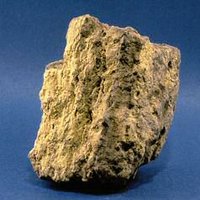 Uranium (Minerals & Mining) Last Updated on 2013-12-15 23:42:25 Uranium is a radioactive element that occurs naturally in low concentrations (a few parts per million) in soil, rock, and surface and groundwater. It is the heaviest naturally occurring element, with an atomic number of 92. Uranium in its pure form is a silver-colored heavy metal that is nearly twice as dense as lead and is pyrophoric when finely divided. Uranium exhibits three crystallographic modifications as follows: alpha --(688°C)→ beta --(776°C)→ gamma. It is a little softer than steel, and is attacked by cold water in a finely divided state. It is malleable, ductile, and slightly paramagnetic. In air, the metal becomes coated with a layer of oxide. Acids dissolve the metal, but it is unaffected by alkalis. Previous Element: Protactinium Next Element:... More »
Uranium (Minerals & Mining) Last Updated on 2013-12-15 23:42:25 Uranium is a radioactive element that occurs naturally in low concentrations (a few parts per million) in soil, rock, and surface and groundwater. It is the heaviest naturally occurring element, with an atomic number of 92. Uranium in its pure form is a silver-colored heavy metal that is nearly twice as dense as lead and is pyrophoric when finely divided. Uranium exhibits three crystallographic modifications as follows: alpha --(688°C)→ beta --(776°C)→ gamma. It is a little softer than steel, and is attacked by cold water in a finely divided state. It is malleable, ductile, and slightly paramagnetic. In air, the metal becomes coated with a layer of oxide. Acids dissolve the metal, but it is unaffected by alkalis. Previous Element: Protactinium Next Element:... More »  Calcium (Minerals & Mining) Last Updated on 2013-10-24 16:29:12 Calcium is the chemical element with atomic number 20; it has an atomic mass of 40.078 atomic mass units (amu). The chemical symbol for calcium is Ca. Calcium is a soft gray alkaline earth metal, and is the fifth most abundant element by mass in the Earth's crust; moreover, it is the fifth most abundant dissolved ion in seawater both in terms of number of atoms and mass, after sodium, chloride, magnesium, and sulfate.[1] Calcium an is essential nutrient for almost all living organisms, with vital roles in cellular metabolism, especially with regard to movement of the calcium ion Ca++ into and out of the cytoplasm functions as a signal for many cellular processes. As a chief component needed in mineralization of bones and shells, calcium is the most abundant metal by mass in a large number of faunal species, especially vertebrates, testudines and mollusca. Previous... More »
Calcium (Minerals & Mining) Last Updated on 2013-10-24 16:29:12 Calcium is the chemical element with atomic number 20; it has an atomic mass of 40.078 atomic mass units (amu). The chemical symbol for calcium is Ca. Calcium is a soft gray alkaline earth metal, and is the fifth most abundant element by mass in the Earth's crust; moreover, it is the fifth most abundant dissolved ion in seawater both in terms of number of atoms and mass, after sodium, chloride, magnesium, and sulfate.[1] Calcium an is essential nutrient for almost all living organisms, with vital roles in cellular metabolism, especially with regard to movement of the calcium ion Ca++ into and out of the cytoplasm functions as a signal for many cellular processes. As a chief component needed in mineralization of bones and shells, calcium is the most abundant metal by mass in a large number of faunal species, especially vertebrates, testudines and mollusca. Previous... More »  Public Health Statement for Copper Last Updated on 2013-09-28 17:33:53 This article is a verbatim version of the original and is not available for edits or additions by EoE editors or authors. Companion articles on the same topic that are editable may exist within the EoE. September 2004 En Español CAS# 7440-50-8 This Public Health Statement is the summary chapter from the Toxicological Profile for Copper. It is one in a series of Public Health Statements about hazardous substances and their health effects. A shorter version, the ToxFAQs™, is also available. This information is important because this substance may harm you. The effects of [[to any hazardous substance depend on the dose, the duration, how you are exposed, personal traits and habits, and whether other chemicals are present. For more information, call the ATSDR Information Center at 1-888-422-8737. This public health statement tells you about copper and the... [../../../view/article/51cbeeb67896bb431f699c51/index-topic=49464.html More »]]
Public Health Statement for Copper Last Updated on 2013-09-28 17:33:53 This article is a verbatim version of the original and is not available for edits or additions by EoE editors or authors. Companion articles on the same topic that are editable may exist within the EoE. September 2004 En Español CAS# 7440-50-8 This Public Health Statement is the summary chapter from the Toxicological Profile for Copper. It is one in a series of Public Health Statements about hazardous substances and their health effects. A shorter version, the ToxFAQs™, is also available. This information is important because this substance may harm you. The effects of [[to any hazardous substance depend on the dose, the duration, how you are exposed, personal traits and habits, and whether other chemicals are present. For more information, call the ATSDR Information Center at 1-888-422-8737. This public health statement tells you about copper and the... [../../../view/article/51cbeeb67896bb431f699c51/index-topic=49464.html More »]]